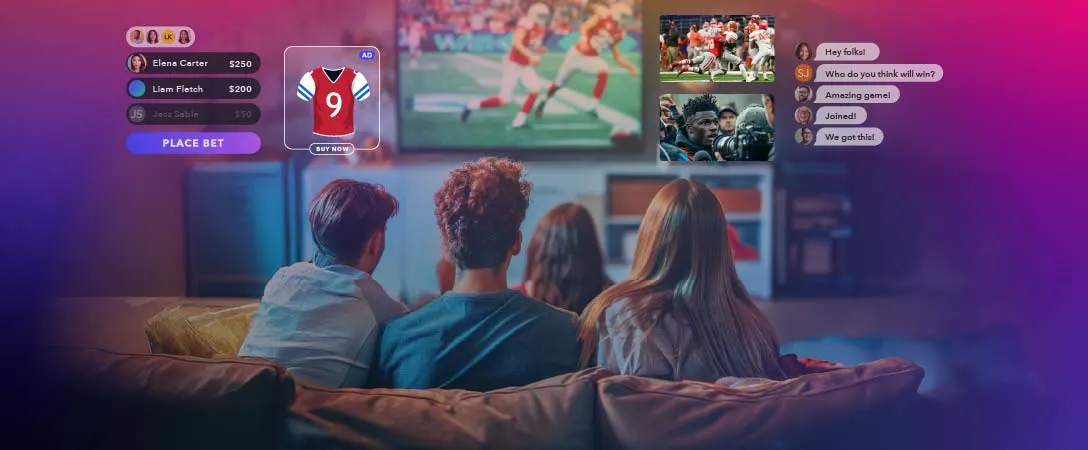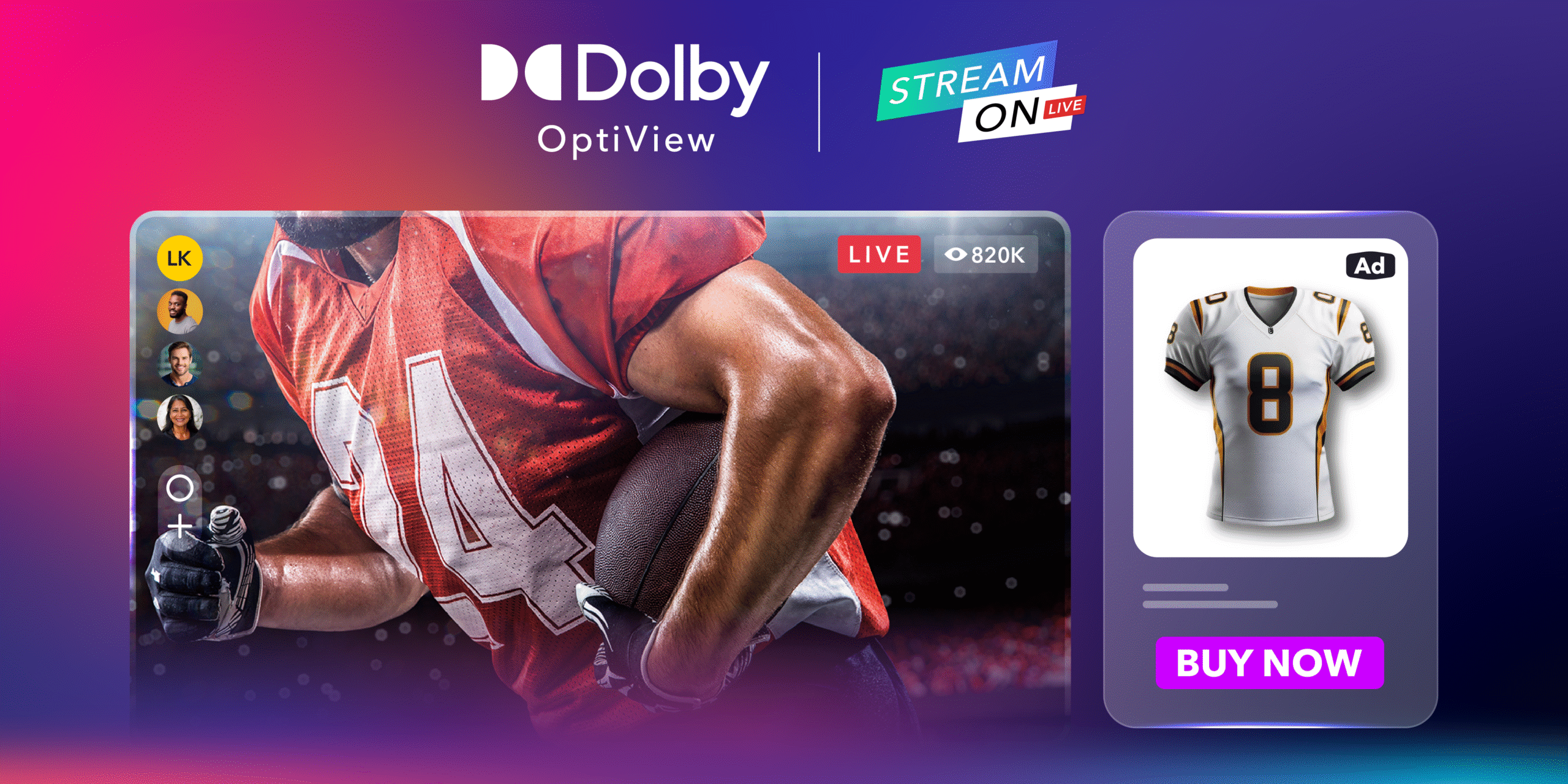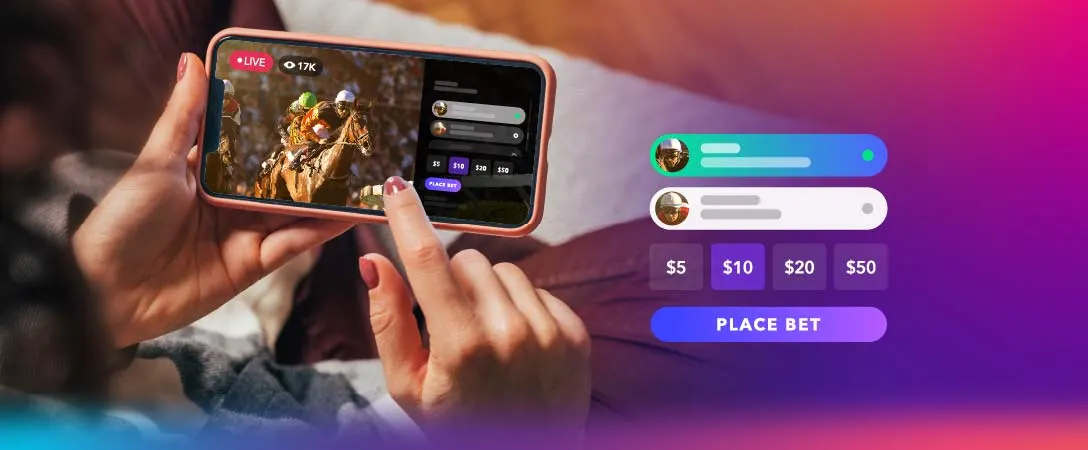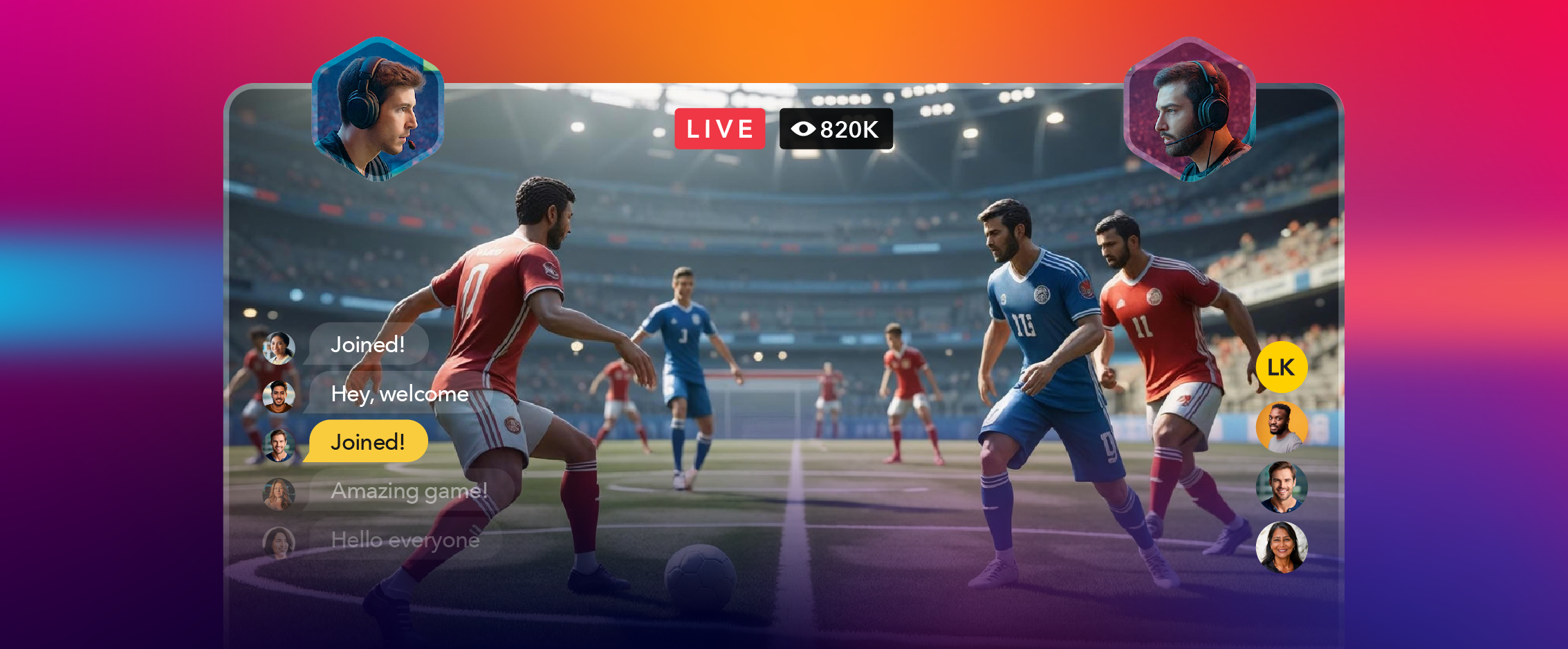As the shift from cable to digital continues, live sports streaming is experiencing rapid growth, giving fans more flexibility and access than ever before. This trend is especially pronounced among Gen Z, with nearly one-third never watching traditional or linear television. A significant majority of 72.9 % spend over an hour each day on paid subscription and streaming services1. With so many platforms competing for attention, how can live sports streaming providers stand out? Some fans subscribe for a single big game and cancel shortly after. While major events are great for attracting new viewers, how can platforms turn those one-time subscribers into long-term fans?
The answer lies in delivering more than just the game. In this blog post, we will explore how sports streaming services can use live streaming to create the next level of fan experience and emotionally resonant stories that build long-term connection with sports fans and loyalty. More specifically, we’ll cover:
- How personalization gives fans a better experience and more control
- How interactive features turn passive viewers into active participants
- Why great content matters, and how quality keeps fans coming back
- How storytelling beyond the game strengthens emotional bonds with fans
Personalized fan experiences
Personalization is the magic play behind today’s most engaging digital platforms, from TikTok to Instagram, keeping users hooked with content tailored to their interests. While live sports can’t deliver entirely unique streams to each viewer, streaming platforms can still offer personalized features. These features can give fans more control, emotional connection, and a sense of ownership over how they experience the game. For example through personalized audio, visual options, ads content and more.
Custom audio tracks
Commentary adds depth and emotion to live sports, but not every fan connects with the default broadcast. Offering customizable audio options, such as different languages, expert analysis, or a “stadium-only” mode, allows fans to tailor their experience. This flexibility enhances immersion and gives viewers more control, making the stream feel more personal and engaging.
Multi-view camera options
Just as audio customization gives fans more control over how they hear the game, visual flexibility can redefine how they see it. One of the biggest advantages of live sports streaming is that it allows viewers to see every game from the best possible angle. While the energy in a stadium is unmatched, it can be hard to follow the action from a distance or a fixed seat.
What’s more, streaming platforms can enhance fan engagement by using multiview technology. This allows viewers to switch between different camera angles in real time. Imagine toggling between a wide tactical shot, a close-up of your favorite player, or even a referee’s perspective. This level of control turns passive watching into an interactive experience. Whether fans want to analyze formations or follow a specific athlete, they can tailor the stream to their preferences, making the experience feel more personal and dynamic.
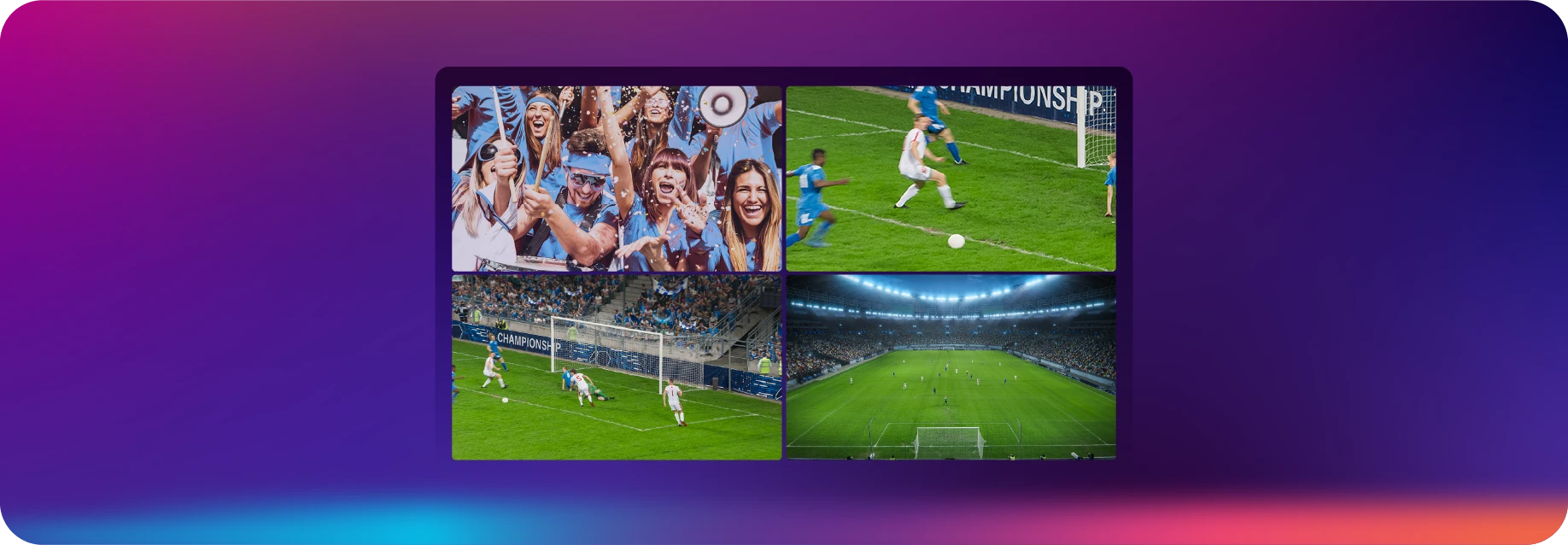
Personalized ads & complementary content
In addition to personalizing on the content side, personalized ads are among the top revenue opportunities in sports streaming. 63% of the streaming industry professionals rank this as a key area for growth2. Technologies like Server-Guided Ad Insertion (SGAI) and programmatic ads now make it easier than ever to deliver relevant, non-intrusive ads tailored to specific sports, devices, and audience segments.
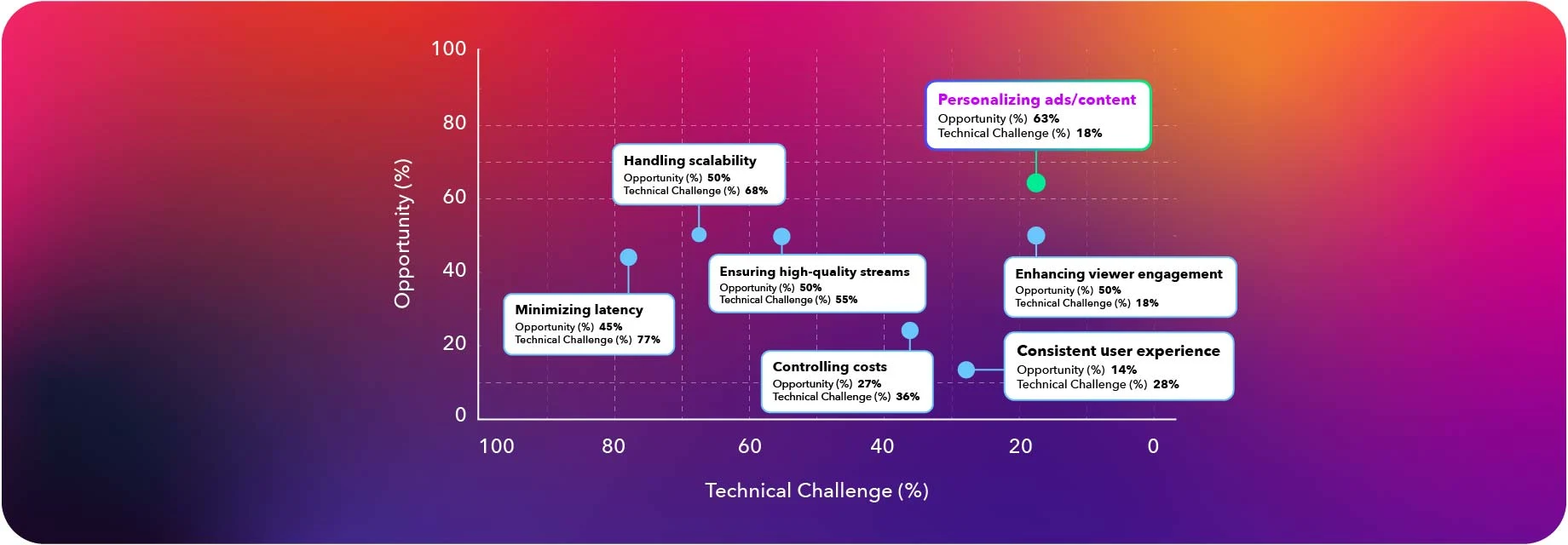
Amazon’s Shop the Show is a standout example. This second-screen experience lets fans shop for merchandise, apparel, and collectibles related to what they’re watching. Whether it’s a live sports event or a favorite series, they can do so without interrupting the stream. Viewers simply open the Amazon Shopping app, type “Shop the Show,” and instantly access a curated product page tied to the content on screen. It’s already integrated with over 1,300 titles, including NASCAR and the National Women’s Soccer League.
NBC’s Virtual Concessions, launched during the Olympics, takes a different approach by turning ads into instant gratification. Viewers can scan on-screen QR codes to order snacks, drinks, or merchandise and have them delivered to their homes, all without leaving the broadcast. This frictionless model keeps fans immersed in the action while offering brands a direct path to conversion.
To push personalization even further, Dolby OptiView Ads enables publishers to insert tailored advertisements into live sports streams, not just based on the content being viewed, but also on user profiles, devices, and more. This smarter targeting reduces ad fatigue and significantly improves ad performance by delivering messages that feel more relevant to each viewer.
The personalization concept can also be applied to complementary content. For example, real-time highlights, player-specific clips, or stats can run alongside the main live feed, enriching the experience without distraction. After the game, personalized recommendations for similar matches or behind-the-scenes content can help extend session time and deepen fan engagement.
Interactive fan experiences
If personalization makes the fan experience more relevant, interactivity takes engagement to an entirely new level. In today’s sports streaming landscape, interactivity is no longer optional, it’s expected. In a recent sports streaming survey, 74% of streaming platforms rated interactive features as a top priority for enhancing user experience. Fans, especially younger audiences, want to be part of the action, engaging with content actively rather than consuming it passively.
The second-screen experience
Gen Z grew up with a phone in hand, and their sports viewing habits reflect that. Whether they’re chatting in group threads, checking social media, or reacting to highlights in real time. Fans want to be part of the moment. Even those attending games in person often engage with second-screen content.
Streaming platforms can embrace this behavior by building interactive features directly into their apps. Formula 1, for example, offers fans access to live telemetry, pit strategy simulations, and onboard cameras through the F1 TV app. Features like live polls, driver comparisons, and customizable viewing angles turn passive viewing into an immersive, personalized experience. For mobile and desktop users, live chat alongside the stream can add a social layer. However, this is less applicable for smart TV viewers in a living room setting.
Integrated sports betting
Besides the social aspect, another form of interactivity gaining traction is sports betting. It adds excitement for fans and opens up new monetization opportunities for platforms. According to a sports fan engagement survey3, while regional regulations vary, the trend shows that odds, predictions, and betting insights are becoming part of mainstream sports content. The convergence of sports media and betting reflects a deeper behavioral insight—fans love to predict outcomes, whether for fun or for stakes.
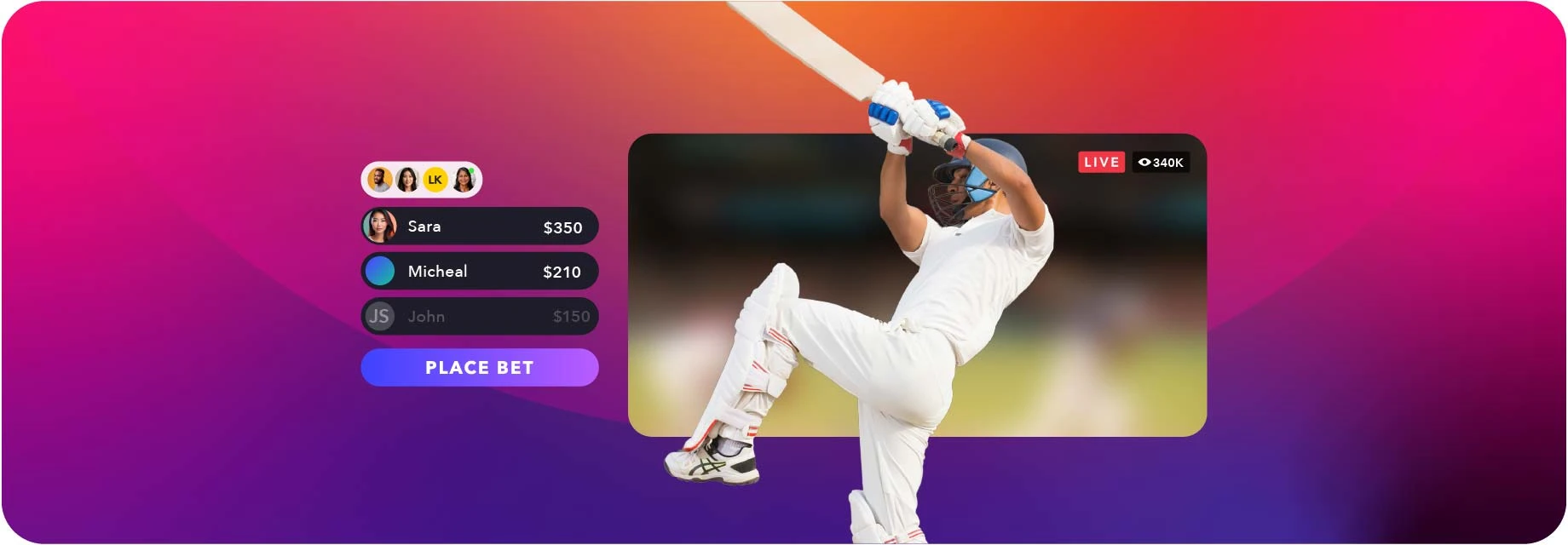
Content is king, quality is queen
While the innovative features above are important, the foundation of a great fan experience is still the quality of the stream itself. Because any buffering, lagging or poor resolution can quickly turn sports fans’ excitement into frustration. Content availability may attract new subscribers, but the quality of viewer experience determines whether they stick around. In the end, even the most engaging features can’t compensate for a poor viewing experience.
Synchronized low latency
Nothing ruins a live sports moment like a spoiler. Yet achieving synchronized low latency at scale remains a major technical challenge. In fact, 77% of industry professionals cite timely and synchronized delivery as a top technical challenge with 62% aiming for latency differences of no more than five seconds. This finding highlights the complexity of latency synchronization at scale, which is crucial for preserving the excitement of live sports. The good news is, advanced streaming solutions like Dolby OptiView Streaming can now guarantee live sports streams are delivered with consistent and synchronized latency across platforms and regions.
In addition to synchronization, there is a growing push to reduce latency in live sports streaming. Low latency is essential for enabling interactive features and creating a more responsive viewing experience. While many platforms currently operate at broadcast-level latency, recent survey4 shows that 62% streaming services aim to achieve latency of 5 seconds or less within the next three years.
In areas like sports betting, latency is often reduced to just 1-2 seconds to align video with real-time data feeds. This significantly improves the fan experience by enabling faster, more accurate, and engaging interactions, ultimately maximizing the betting window.
Accessibility & cross-platform support
Device compatibility plays a crucial role in fan experience. With audiences tuning in on everything from smart TVs to mobile phones, streaming platforms must ensure consistent performance. That performance needs be high-quality across all screens to meet viewer expectations. Survey data shows smart TV support is the top priority, followed by connected devices like streaming pucks, and then mobile and desktop platforms. Unlike smartphones, smart TVs tend to stay in households for years, making it essential to support older models to maintain broad accessibility.

Supporting a wide range of devices, particularly legacy TVs, often requires more resources than expected. A common best practice is to focus on what matters most to your business. For live sports platforms, that often means prioritizing the fan experience over building and maintaining a video player. Solutions like Dolby OptiView Player can help ensure accessibility and deliver a smooth, consistent viewing experience across all devices, keeping fans engaged wherever they are.
Storytelling beyond the game
The earlier sections explored ways to improve fan experience during the game. But how can streaming platforms keep fans engaged outside of game time? The answer lies in what happens beyond the field. Fans are deeply interested in the personalities, rivalries, and behind-the-scenes moments that shape the sport.
By offering rich, story-driven content like documentaries, player profiles, training sessions, and exclusive interviews. Streaming platforms can create emotional connections that last all year. This kind of content keeps fans involved even when no games are being played, such as before the season begins or after it ends.
The following sections explore two powerful ways to build that connection. The first looks at behind-the-scenes content that brings fans closer to the teams and the sport. The second focuses on player-driven storytelling that highlights the personalities and values that make athletes truly inspiring.
Behind the scenes content
Fans crave more than just the match, they want to see what happens off the field. Formula 1 has tapped into this demand by creating exclusive content that offers a closer look at the lives of drivers and teams. One example is the documentary Drive to Survive, a series that takes you behind the scenes of Formula 1, showing the real stories, rivalries, and emotions of the drivers and teams throughout the racing season. This kind of storytelling helps fans connect with the human side of the sport. F1 also offers Virtual Paddock, a two-day interactive experience that gives fans a guided tour of the F1 paddock, track, and podium, led by F1 ambassadors, drivers, and expert hosts. It delivers a VIP-like backstage pass from anywhere in the world, deepening fan connection.
Player-centric content
What draws fans to their favorite athletes often goes beyond performance, it’s about personality, values, and the qualities they embody on and off the field. People become fans of players who reflect traits they admire or aspire to, such as resilience, leadership, or authenticity. That’s why player-centric content has become so powerful, offering fans a deeper emotional connection through storytelling.
From NBA Rooks to FC Barcelona’s Matchday, these series spotlight the human side of athletes, their journeys, challenges, and triumphs. This kind of content is especially valuable during the off-season, keeping fans engaged and emotionally invested even when the games aren’t being played. Some viewers watch this content because they already love the sport and its players. For others, these behind-the-scenes stories serve as an entry point, turning casual viewers into passionate fans. This player-focused content is vital for both fan loyalty and audience expansion, resonating with existing supporters while attracting new ones.
Conclusion
Fan experience in live sports streaming is no longer just about watching the game, it’s about being part of it. While synchronized low latency and cross-platform support form the technical foundation, features like personalization, interactivity, and storytelling elevate the experience to new heights. By combining reliable performance with emotionally engaging content and interactive tools, sports streaming platforms can not only attract fans, but keep them coming back long after the final whistle.
References:
[1] Understanding US Gen Z media consumption trends: Insights for brands
[2] [4] [5] Reimagining the game: Capitalizing on innovation in live sports streaming



